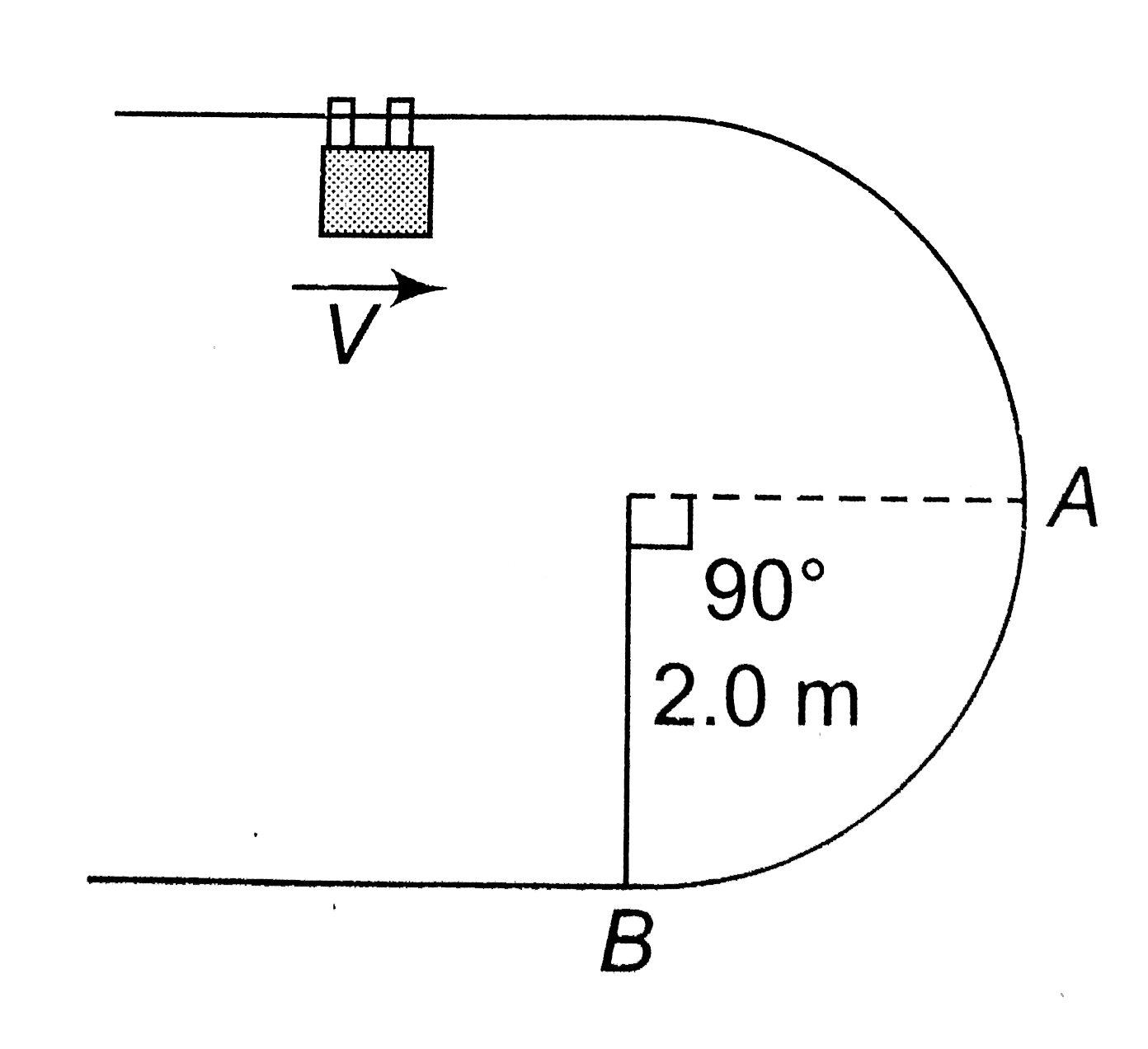A 1 kg mass is projected down a rough circular track (radius=2.0 m) placed in vertical plane as shown. The speed of the mass at point A is 3 m/s and at point B, it is 6.0 m/s. How much work is done on the mass between A and B by the force of friction?

−7.5J
−8.5J
−6.5J
−24J
The correct Answer is:c
Conservation of energy principle
HE at A=12×1.0×3.02=4.5J
Loss in PE between A and B =1.0 xx 10 xx 2 =20 J.
Gain in KE from A to B if there had been no friction =20 J
But actual KE at B =12×1.0×62=18J
Loss in energy due to friction =24.5−18=6.5J
Topper's Solved these Questions
- FRICTIONBOOK - CENGAGE PHYSICSCHAPTER - FRICTIONEXERCISE - OLYMPIAD AND NTSE LEVEL EXERCISES (Read the given statements and select the correct option.)
1 Videos
- FRICTIONBOOK - CENGAGE PHYSICSCHAPTER - FRICTIONEXERCISE - CHALLENGING EXERCISE
3 Videos
- ELASTICITYBOOK - CENGAGE PHYSICSCHAPTER - ELASTICITYEXERCISE - OLYMPIAD AND NTSE LEVEL EXERCISES
10 Videos
- SOUNDBOOK - CENGAGE PHYSICSCHAPTER - SOUNDEXERCISE - OLYMPIAD AND NTSE LEVEL EXERCISE
10 Videos
Similar Questions
Knowledge Check
A 1kg mass is projected down a rough circule track (redius=2.0m) placed in vertical plane as shown. The speed of the mass at point A is 3m/s and at point B, it is 6.0m/s. How much is work is done on the mass between A and B by the force of friction?
 A−7.5JB−8.5JC−6.5JD−24J
A−7.5JB−8.5JC−6.5JD−24JThe gravitational potential difference between the surface of a planet and a point 20 m above it is 16 J/kg. How much work is done in moving a 2 kg mass by 8 m on a slope 60∘ from the horizontal ?
A11.1JB55.5JC16JD27.1JUnder the influence of a force, an object of mass 4 kg accelerates from 3 m/s to 6 m/s in 8s. How much work was done on the object during this time?
A27JB54JC72JD96J
A car of mass 300 kg is travelling on a circular track of radius 100 m with a constant speed of 60 m/s
Calculate the angular momentum ?
View SolutionThree identical point mass each of mass 1kg lie in the x-y plane at point (0,0), (0,0.2m) and (0.2m, 0). The net gravitational force on the mass at the origin is
View SolutionThree identical point mass each of mass 1kg lie in the x-y plane at point (0,0), (0,0.2m) and (0.2m, 0). The net gravitational force on the mass at the origin is
View SolutionAn object of mass 4 kg falls from rest through a vertical distance of 20 m and reaches with velocity of 10 (m)/(s) on ground. How much work is done by air friction?
View SolutionThree identical point mass each of mass 1kg lie in the x-y plane at point (0,0), (0,0.2m) and (0.2m, 0). The net gravitational force on the mass at the origin is
View Solution
